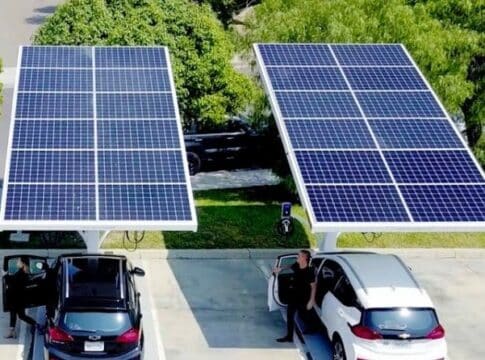Scaling the Carbon Removal Industry: The Urgent Push for a Greener Future
An analysis by the carbon removal market platform CDR.fyi shows that only 0.5% or 32 companies with Science-based targets have bought durable carbon removal. A separate report by the BCG showed that demand for carbon removal credits must reach 40 to 200 million tonnes of CO2 a year in 2030, or $10 to $40 billion, to meet climate goals.
CDR.fyi is the largest open data platform dedicated to tracking high-permanence carbon dioxide removal (CDR). Their goal is to provide accurate data on CDR to help guide investment decisions and scale up the industry.
The Need to Scale Up
Carbon removal is an emerging industry but is an important component of the fight against climate change.
Businesses need some amount of carbon removals to achieve their net zero goals. Yet, only a number of large companies are onboard the CDR sector and charging to help it scale. Out of almost 6,000 companies with Science-based targets, only 32 of them have bought CDR credits.
Last year, only over 45,000 tonnes of permanent carbon removal credits were delivered, according to the CDR platform. So, to bring it to the level required by 2030, at 40 million tonnes, that figure has to increase by around 1000x.
RELATED: CDR Purchases Jump 437% in H1 2023
The growth seems to be lofty to achieve but it’s possible because several companies have existing plans to develop and build facilities that can remove carbon in megatonne level.
Today’s CDR purchases of future tonnes are much higher than deliveries. And these are mostly offtake deals where carbon credit delivery will be for several years. To achieve the 2030 target, CDR credits have to be ordered by 2026 at the latest.
Forecasting the long-term requirement for carbon removals is not easy but the lowest estimates suggest it would be in billions of tonnes by 2050.
In a separate analysis by BCG, the CDR market will continue to be dominated by voluntary demand from large corporations.
They estimated that demand for durable CDR is projected at 40 – 200 Mt CO2/yr worth $10 billion to $40 billion in 2030, increasing significantly to 80 – 870 Mt CO2/yr or $20 billion to $135 billion in 2040. But that’s the low scenario projection.
The high scenario, as seen in the chart below, calls for a demand of 200 – 870 MtCO2/yr in 2030 to 2040. That is equivalent to $40 billion – $135 billion market value.
It is, therefore, apparent that there’s a high need to scale up the CDR industry to meet those projections. The BCG analysis also indicates that while voluntary demand will take up the CDR market, compliance demand will also grow. It will reach around 15% in 2040.
The Pivotal Role of CDR Buyers
To achieve the 40 million tonnes of carbon removal capacity by 2030, investment in CDR should be over $100 billion.
However, according to CDR.fyi data, only around 4.8 Mt of CO2 have been purchased to date. But if the growth in CDR purchases this year (10x) and beyond is maintained, it would be possible to reach the 40 Mt capacity.
That means the number of large corporate buyers has to increase significantly. From today’s 6 buyers ordering an average of 100k tonnes, it must grow to 4,000 CDR purchasers.
In this case, buyers of carbon removal credits play a critical role in helping ramp up market growth as well as spur innovation necessary to build a diversified CDR supply chain.
As per BCG report, there will be more diverse buyers as the price of carbon credit drops. Currently, early buyers with corporate net zero pledges such as Microsoft and J.P. Morgan primarily drives CDR demand.
RELATED: Microsoft’s $200M CDR Deal With Heirloom
But by 2030-2040, the CDR market can expect to see a broader range of industry buyers if average prices decrease.
The same BCG study revealed that the key driver for most CDR buyers is the quality of the credits. From the current 26% share of durable CDR in carbon credit portfolio mix, it will grow to 35% in 2030 and 48% in 2040.
Moreover, about 70% of them said that they will increase CDR purchases if there’s guidance from scientific or standard setters.
Recognized bodies such as the Science-based Target Initiative (SBTi) and VCMI can impact purchasing behavior by providing guidance on how carbon removals be included in corporate Net Zero targets. The standards can help facilitate faster project lead times and carbon credit issuance.
There’s also a need for clean incentives to attract more buyers of carbon removal credits. In particular, 80% of the surveyed CDR buyers said that their spending will increase with government incentives.
The carbon removal industry is vital for climate goals, but only 0.5% of companies with science-based targets invest in it. Scaling the industry needs more corporate support, government incentives, and guidance from leading organizations.
The post Scaling the Carbon Removal Industry: The Urgent Push for a Greener Future appeared first on Carbon Credits.



